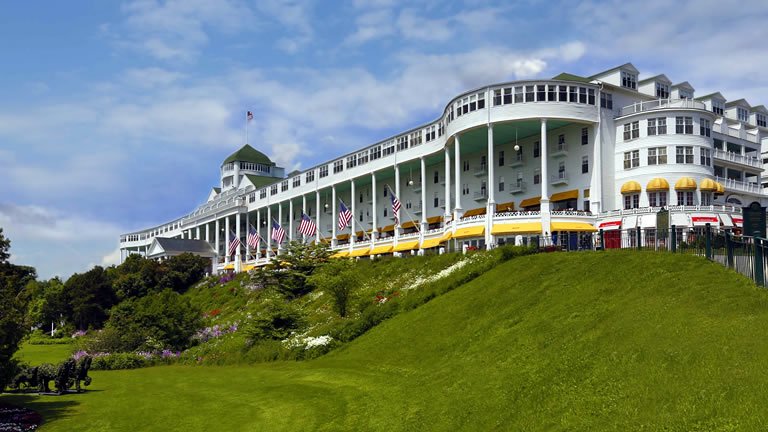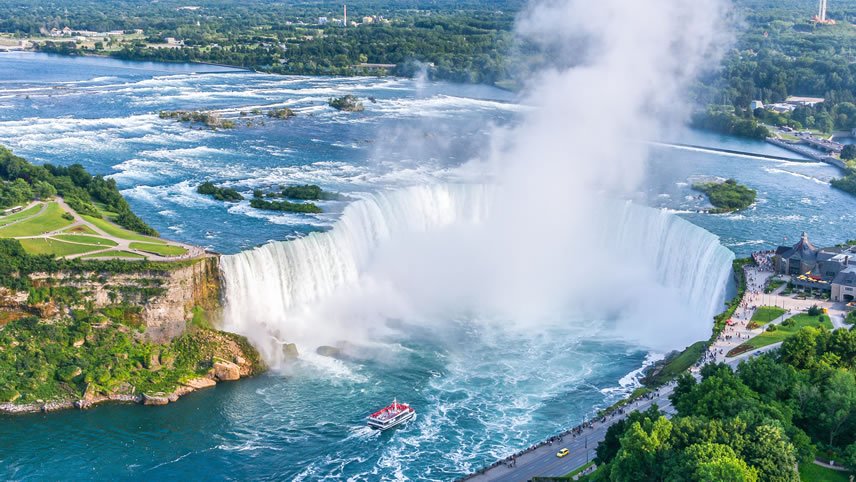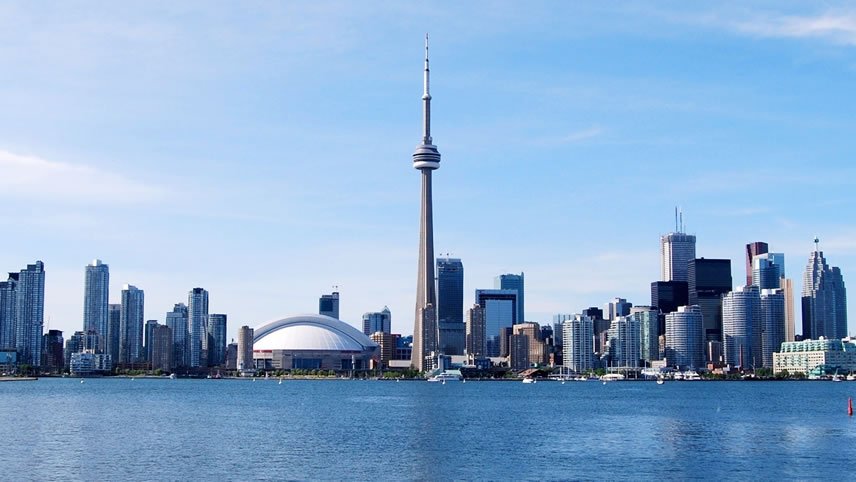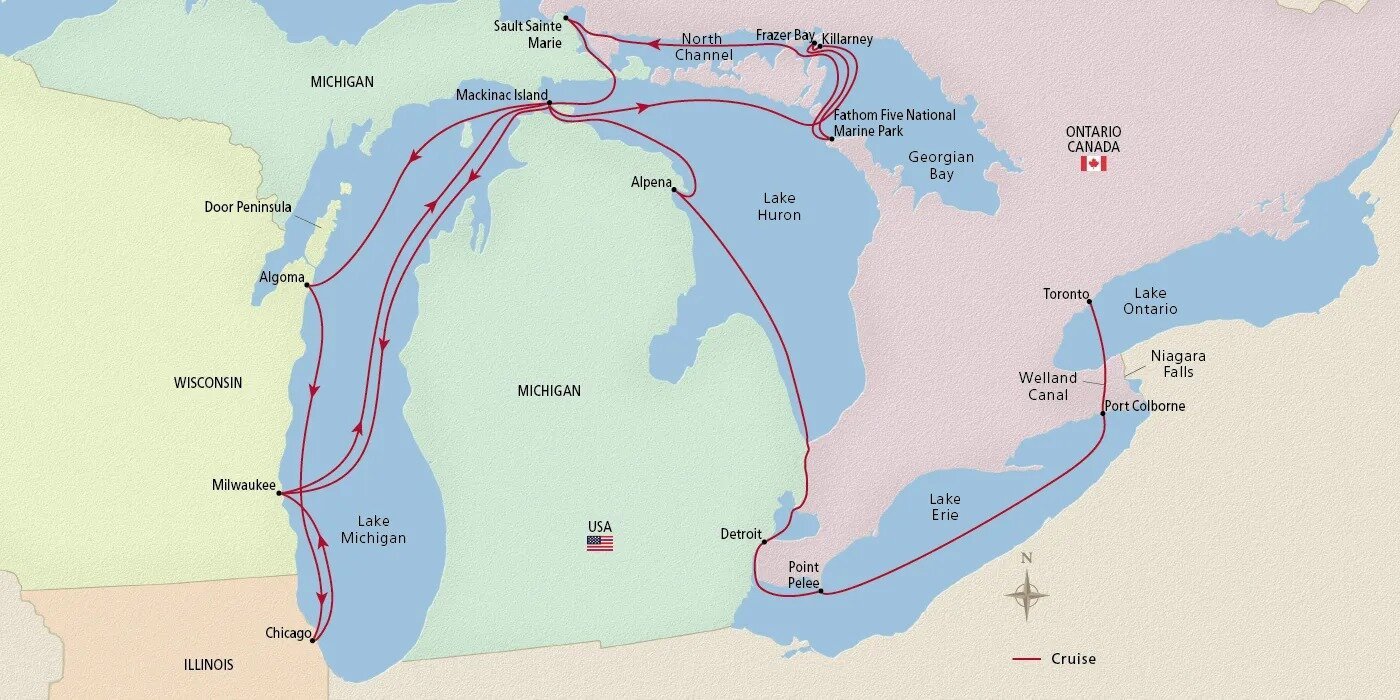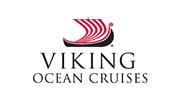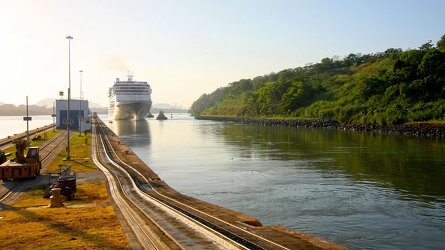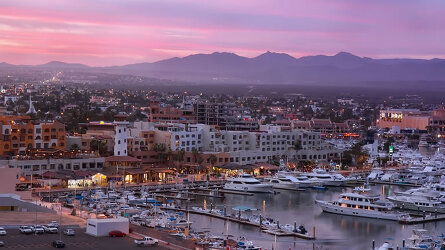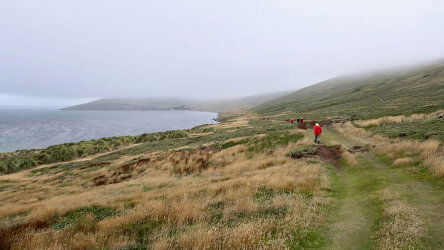Overview
Itinerary
Embark your ship and settle into your stateroom. Milwaukee was first settled by Europeans in 1818, when French-Canadian fur trader Solomon Juneau arrived. German, Polish and Eastern European immigrants followed, bringing with them a long tradition of beer brewing. For several decades in the 20th century, Milwaukee became the world's most prolific beer producer. Today, the city is a vibrant center of art, history and culture. The RiverWalk, a pedestrian walkway along the Milwaukee, is a popular spot for enjoying relaxing strolls or viewing public art installations.
Steeped in the charms of simpler times, Mackinac Island is a gem of the Great Lakes. Located in the Straits of Mackinac where Michigan's upper and lower peninsulas are closest and Lakes Huron and Michigan meet, this bucolic haven preserves gilded Victorian-era treasures along car-free streets traversed by horse-drawn carriages. The perimeter road is the only state highway in the US that does not permit motor vehicles. More than 80% of Mackinac is protected as a state park, from its Greek Revival Grand Hotel and British-built Fort Mackinac to its preserved wilderness areas.
Killarney was founded by a French-Canadian fur trader in 1820; he named the post Shebahonaning, or 'canoe passage.' Its location on the northern shore of Georgian Bay made it ideal for trading. Nearby, the stunning cliffs of the La Cloche range rise dramatically above the shores of Lake Huron. These remarkable mountains are the pinnacle of Killarney Provincial Park, a vast wilderness of lakes and Eastern mixed forest. This breathtaking expanse of protected land is laced with hiking trails and—true to Killarney's original name—canoe routes that link the area's lake system.
Frazer Bay is located off a remote finger of land on the eastern tip of the North Channel in Ontario's Georgian Bay, a UNESCO Biosphere Reserve. Its eponymous hill reaches almost 600 feet, offering sweeping views of the surrounding landscape. The bay lies near Killarney Provincial Park, a vast wilderness of lakes and Eastern mixed forest framed by glacier-sculpted pink granite cliffs. Across the channel lies scenic Manitoulin Island, the world's largest freshwater lake island and itself home to another 108 freshwater lakes—some with islands of their own.
Fathom Five National Marine Park is nestled between the waters of Georgian Bay and Lake Huron. Its rugged landscapes offer a picturesque backdrop to the blue-tinged waters that are a popular destination for scuba divers to explore an array of sunken shipwrecks. Nearby Flowerpot Island is famed for its rock formations and historic lighthouse, with hiking trails that showcase a wealth of treasures. The Saugeen Ojibway People are collaborating with Parks Canada on an environmental project to protect the freshwater ecosystem, for today and beyond.
A series of pink granite islands known for their natural beauty, the Benjamin Islands lie toward the eastern end of the North Channel. Dramatic landscapes that were sculpted by glaciers provide a picturesque rocky refuge for visitors to its shores. The harbor is formed by two principal islands, the North Benjamin and South Benjamin, which are enveloped by a number of smaller islets. The surrounding waters are tranquil and crystal clear, offering the perfect opportunity to observe a variety of wildlife from the water, including bald eagles and various fish species.
Founded by French missionaries in 1668, Sault Sainte Marie is Michigan's oldest city and one of the oldest in the US. It is also home to the famous Soo Locks, a series of parallel locks that make river travel between Lake Superior and Lake Huron possible, thereby linking Superior to the lower Great Lakes and the Atlantic Ocean. Opened in 1855 to allow ships to bypass the St. Marys River's 21-foot fall over roiling rapids, this innovative lock system was one of the great engineering projects of its day. Today, it guides ships past Sault Sainte Marie and its twin city in Ontario.
Algoma is the gateway to the scenic Door Peninsula, a slender limestone peninsula projecting out into Lake Michigan. It was first explored by French missionaries and fur traders during the 17th century. According to legend, Jean Nicolet believed his encounter with the Menominee Tribe was a meeting with Asians of the Far East. The peninsula is also the westernmost edge of the Niagara Escarpment, a prehistoric ridge that stretches more than 650 miles across the Great Lakes region, and is home to boreal forests, rugged rock formations and sandy beaches.
A cultural hub renowned for its world-class museums, including the Art Institute and the Museum of Science and Industry, Chicago is an expansive metropolis with a magnificent skyline that stretches along the shores of Lake Michigan. Numerous sandy beaches offer the perfect spot to while away a sunny day. For nature lovers, Rainbow Beach features a dune habitat which provides an important stop for migrating birds; more than 250 species have been recorded here. Jazz and blues, a rich history, and the famed Chicago-style pizza round out this sophisticated Midwestern city.
Milwaukee lies on the shores of Lake Michigan at the confluence of three rivers—the Milwaukee, Menomonee and Kinnickinnic. For centuries before the arrival of Europeans, the area was inhabited by indigenous peoples, such as the Potawatomi, Menominee, Fox and Winnebago. In 1647, missionary Jacques Marquette came to Milwaukee's shores, and fur traders soon followed. The settlement was a secondary trading post until after the Revolutionary War, when Jacques Vieau established the “Milwaukee Outfit” and made the outpost an important stop on the western shores of Lake Michigan.
Discover the birthplace of Harley-Davidson, one of the world's most iconic brands. Milwaukee is home to its namesake museum which showcases the company's meteoric rise to fame more than 100 years ago, and its factory offers visitors the chance to witness the making of these epic motorcycles. The city's industrial heritage is reflected in its historic neighborhoods; the Third Ward, a downtown renovated warehouse district featuring a number of leading creative centers, includes the Milwaukee Institute of Art and Design and the Broadway Theatre Center.
Steeped in the charms of simpler times, Mackinac Island is a gem of the Great Lakes. Located in the Straits of Mackinac where Michigan's upper and lower peninsulas are closest and Lakes Huron and Michigan meet, this bucolic haven preserves gilded Victorian-era treasures along car-free streets traversed by horse-drawn carriages. The perimeter road is the only state highway in the US that does not permit motor vehicles. More than 80% of Mackinac is protected as a state park, from its Greek Revival Grand Hotel and British-built Fort Mackinac to its preserved wilderness areas.
Alpena is in the northeastern region of Michigan's Lower Peninsula. The town faces Lake Huron's Thunder Bay and is home to Alpena Light, a brilliant red steel structure built in 1914. After its founding in 1840, fishing and logging were introduced to bolster its economy; today it is home to one of the largest limestone quarries in the world. Two of its architectural gems are listed on the National Register of Historic Places: the art deco County Courthouse and the late-Victorian IOOF Centennial Building, once the city's courthouse.
Detroit sits on one of the four straits that link the Great Lakes to the St. Lawrence Seaway and has emerged as a city rich in culture. In 2015, it became the first US city to earn designation as a “City of Design” by UNESCO for its creativity in urban development. Detroit was founded as a fort in 1701 and later grew into the epicenter of the US automobile industry. Today the city is beloved as the birthplace of Motown, a portmanteau of “motor” and “town.” Its waterfront reveals remarkable examples of postmodern and art deco skyscrapers.
Point Pelee is a pristine area that points into Lake Erie from Ontario, tapering off to a fine point before disappearing into the waters. The peninsula comprises woodlands and the largest freshwater marshes on the Great Lakes. It was proclaimed a national park in 1918 and is further protected by the Ramsar Convention, an international treaty that protects wetlands. Located at the convergence of two major bird migration flyways, about 350 species have been recorded here. Boardwalks deliver visitors into this unique ecosystem of vast, open vistas and wave-kissed shores.
Port Colborne proudly proclaims itself the “Gateway to Navigation.” It is also the gateway to North America's largest and most powerful cascade, Niagara Falls. Epic in its scope and volume, the falls hurl 42 million gallons of water down 20 stories every minute. Its mile-wide length straddles the Canadian and US borders and is split by islands into three smaller cataracts: Horseshoe Falls, Bridal Veil Falls and American Falls. Long a storied destination for young honeymooners, today the mighty torrent is a thrill for visitors.
Toronto is beloved by many as one of Canada's boldest and most innovative capitals. Hugging the shores of Lake Ontario and facing the picturesque Toronto Islands, it was founded by British loyalists fleeing the American Revolution in 1793. Today the city is a pleasure to explore on foot, whether strolling past the Victorian bay-and-gable homes of Rosedale, or the historic enclave of Wychwood Park, an Ontario Heritage Conservation district. The city's Distillery District is home to North America's largest preserved collection of Victorian industrial architecture. After breakfast, disembark your ship and journey home.
Life Onboard Viking Octantis
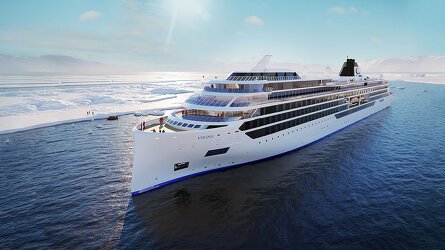
Launching in 2022, the Viking Octantis is Vikings' newest expedition ship, part of a fleet of award winning, state of the art ships built for exploration in sensitive environments. Read more
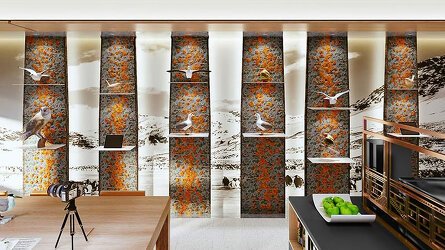
Viking are destination experts. With no casinos or children on board, you can be assured that the focus is firmly on enrichment and education. Read more
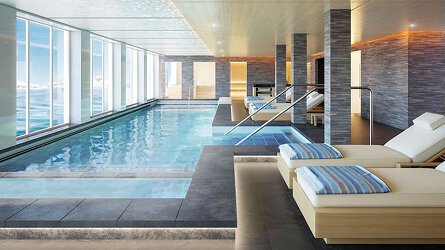
After a day of exploration or just to enhance the relaxation of a day at sea, the on-board Spa will leave you feeling recharged and revitalized. Read more

Viking offer six on board dining options. Beer, wine and soft drinks are available with lunch and dinner at no additional charge of fee. Read more
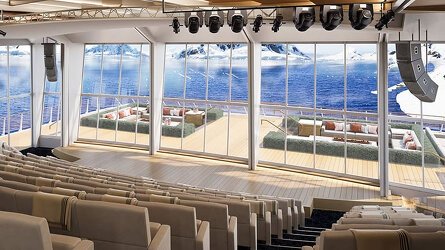
Viking proudly includes all that you need and nothing you do not. A variety of features and services are standard inclusions on your cruise. Read more

Viking include one complimentary shore excursion in every port of call. Enjoy included experiences around the world. Read more

Trip Reviews (1) Most Recent 'Niagara & Great lakes Treasures' Reviews
Brochure
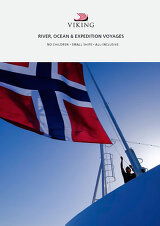
Viking River, Ocean & Expedition Voyages (2025-27)
Availability
 USD
Port charges, taxes and fees included.
USD
Port charges, taxes and fees included.
Tour & cruises prices are per person. Prices shown have savings applied, are subject to availability and may be withdrawn at any time without notice. Pricing and trip details are correct at this point in time, however are subject to confirmation at the time of booking and are subject to change by Viking. For cruise itineraries, cabin images are sourced from Viking. These should be treated as indicative only. Cabin inclusions, upholsteries and room layout may differ to the image(s) shown depending on the ship selected and your sailing dates.
